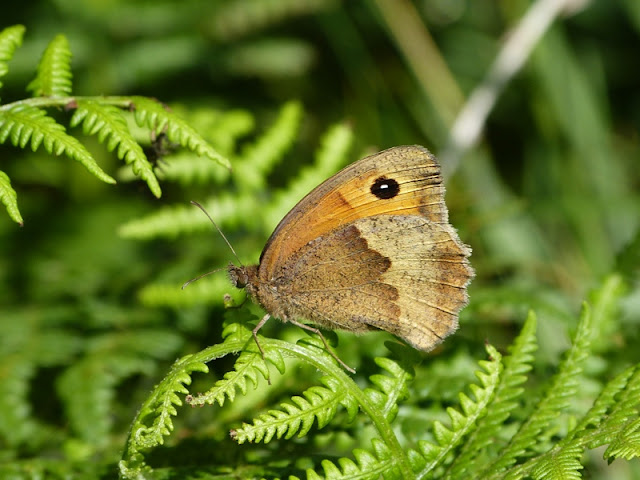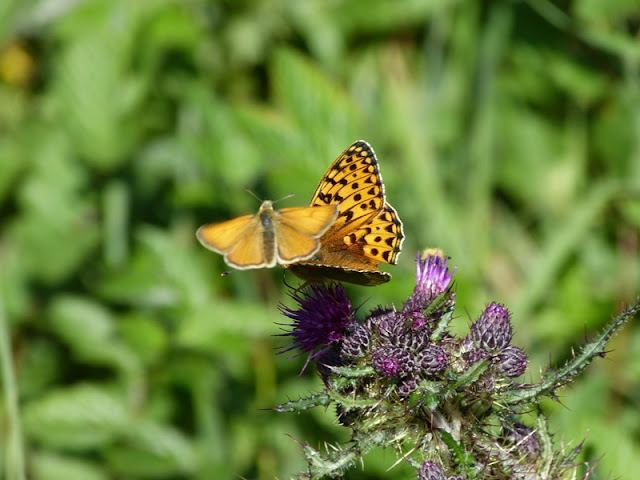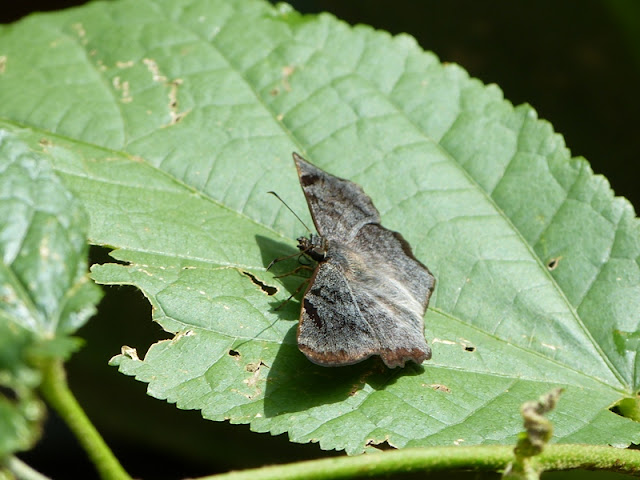If the butterflies I saw on this trip proved a bit difficult to identify the skippers were certainly the most challenging. Apparently over 650 species of Hesperiidae have been identified in Costa Rica. Many of them are so similar that inspection of the upper side and underside of the wings is necessary.
Of course, usually I tended only to see the top side of the butterflies, but by a long process of elimination I think I have the identification correct for the Skippers I managed to photograph.
Before we went away I poured over butterfly books and noticed that many of the Skippers found in Costa Rica are wonderful colours, however most of those I saw were brown!
Below is a bit of a photo dump of the Skippers I was lucky enough to see.
The first Skipper I saw in the hotel grounds was the Liris Skipper, Lerema liris.
And shortly after I saw a Dusted Spurwing, Antigonus erosus. These turned out to be quite common, being seen in shaded areas of the hotel grounds and on the track through the woods.
I spent ages trying to identify the butterfly below, which didn't appear to match any shown in the books I had, or on the internet. Eventually, I discovered that it is a female Dusted Spurwing!
I saw this Pale Mylon, Mylon pelopidas, on vegetation right next to the beach on my first morning.
The Fiery Skipper, Hylephila phyleus, was regularly spotted around the hotel grounds.
I saw this Common Glassywing, Pompeius pompeius, on the same shrub.
The Violet-banded Skipper, Nyctelius nyctelius, is very similar to the Common Glassywing, but the small dark spot on the underside of the wing helps to separate them.
I saw this Fantastic Skipper, Vettius fantasos, from our balcony.
This Mexican Sandy Skipper, Zopyrion sandace, was along the track.
The Tropical Checkered Skipper, Pyrgus oileus, was definitely the most common Skipper, actually probably the most common butterfly I saw.
Some areas of low vegetation along the track were swarming with them!!
I had read other enthusiasts' accounts of their visits to Costa Rica and one person who stayed at the same hotel had seen Dorantes Longtail, Urbanus dorantes. I was delighted to see one of these myself.
I saw a few other Longtails after this and assumed that they were all Dorantes, but when I reviewed my pictures in the evenings, I discovered that there were several other species in the area. After that I photographed every Skipper I saw, as that was the only way to be sure of identifying them!
This is the Mottled Longtail, Cogia undulatus.
The Teleus Longtail, Spicauda teleus.
The Plain Longtail, Urbanus simplicius.
The Dark-spotted Polythrix, Ectomis asine.
And the Tanna Longtail, Spicauda tanna.
Even the Coyote Cloudywing, Achalarus toxeus, had a similar appearance to the Longtails.
This is a Saturnus Skipper, Callimormus saturnus. They were really small and I thought it was a fly when I first saw it landing!
And here is a Clouded Skipper, Lerema accius.
There are a number of very similar-looking Bollas and Sootywings. I think this is an Aztec Sootywing, Staphylus azteca.
This is a Rounded Sootywing, Bolla imbras.
And I think this is an Obscure Bolla, Bolla brennus.
This is a Glassy-winged Skipper, Xenophanes tryxus. It is very different from the Common Glassywing higher up the page.
This Mimosa Skipper, Cogia calchas, could almost be confused for a longtail that has lost its tail!
The Obscure Skipper, Panoquina panoquinoides.
And its close relative the Hecebolus Skipper, Panoquina hecebolus.
And two lovely mottled skippers, the Morning Glory Pellican, Pellicia dimidiata.
And a Variegated Skipper, Gorythion begga.
There was a very rapid white butterfly that appeared to live in the tree next to our balcony. Frustratingly, it always seemed to land just out of sight, until the one occasion when I was able to get this shot and identify it as a White Enops, Polyctor cleta.
One day I saw three of these Laviana White-skippers, Heliopetes laviana. They were all laying eggs.
On the last day of our holiday I spotted this beautiful Hammock Skipper, Polygonus leo, on the sand at the edge of the beach.
And this Rusty Skipper, Lerema Micythus, was in the hotel grounds also on our last morning.
Despite most of the skippers I saw being brown, I quite enjoyed the challenge of identifying them. I managed to photograph and identify 31 species, which I find quite amazing considering that I wasn't able to get out as much as I wanted because of the weather and they were all spotted within about 300 metres of each other.
.jpg)
.jpg)
.jpg)
.jpg)
.jpg)
.jpg)
.jpg)


.jpg)
.jpg)
.jpg)
















.jpg)






.jpg)
.jpg)
































